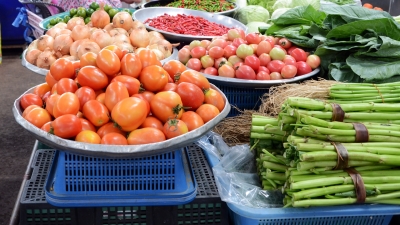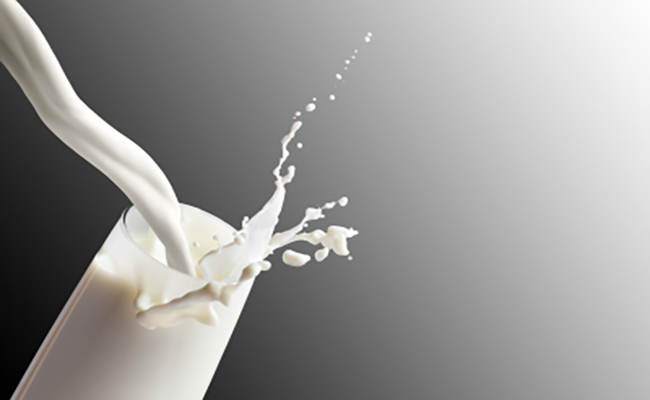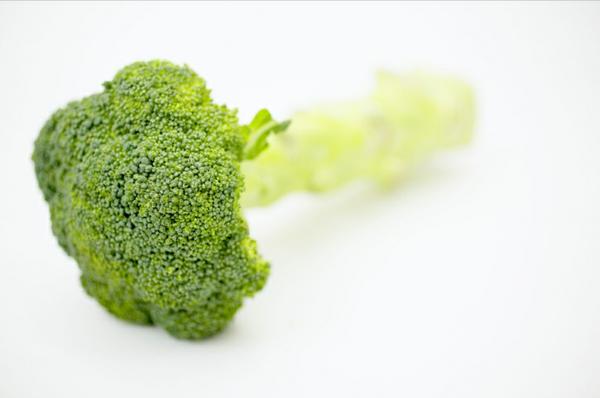Farmers Markets to Lower Blood Pressure with the DASH Diet

This Dietary Approaches to Stop Hypertension (DASH) diet is recommend to manage high blood pressure. This diet is rich in fruits and vegetables. You need to consume between three to five servings of vegetables daily and between four to five fruits daily. That likely sounds overwhelming, but it can be effective in your efforts to lower blood pressure.
One vegetables serving is equal to 1 cup raw leafy green vegetable, ½ cup cut-up raw or cooked vegetables, or ½ cup vegetable juice.
One fruit serving is equal to 1 medium fruit, ¼ cup dried fruit, ½ cup fresh, frozen, or canned fruit, or ½ cup 100% fruit juice.
It’s the perfect time of year to adopt the DASH diet if you are struggling with high blood pressure. Many varieties of produce are in season and farmers markets are readily available.
3 Benefits of Shopping at Farmers Markets
- Farmers markets are environmentally friendly. The food is produced and sold locally, while food in grocery stores travels an average of 1500 miles before it reaches your plate.
- Produce grown for farmers markets is typically allowed to fully ripen naturally before it is harvested. Nothing is used to speed up the ripening process.
- The produce purchased at a farmers market comes straight from the garden. No processing. This equals fresh and nutrient rich food.
Tips for Shopping at Farmers Markets
Shopping at a farmers market is not the same as going to the grocery store.
Continue reading
How to Use Calcium to Lower Blood Pressure

The link between calcium and blood pressure was noticed years ago when researchers realized people drinking hard water had less high blood pressure than those drinking soft water. Hard water contains more minerals, including calcium.
Individuals receiving more than 800 mg of calcium daily have a 23 percent decreased risk of high blood pressure versus those consuming less than 400 mg of calcium per day.
Back in 1996, scientists compiled all the research to date on calcium and high blood pressure. The results showed calcium supplements given to individuals with high blood pressure lowered systolic blood pressure (top number) an average of 4.3 mm Hg and diastolic blood pressure (bottom number) 1.5 mm Hg.
Some people respond better to supplemental calcium than others. Those with the best results include African-Americans, elderly, pregnant women, menopausal women, people with salt-sensitivity, individuals with a high sodium intake, and those with Type II diabetes.
For the best results, don’t rely on a supplement alone. Work to increase your intake of calcium containing foods – dairy. To promote heart health, select low fat dairy products, such as low fat milk, cheeses, and yogurts.
Additional calcium sources:
Leafy greens (i.e. kale, collard, turnip, mustard greens)
Broccoli
Sardines
Canned Salmon
Calcium fortified Orange Juice
Tofu (if made with calcium carbonate)
For even better results, supplement calcium along with vitamin D. One study supplemented women 1200 mg of calcium to reduce blood pressure. When they added 800 IU of vitamin D, systolic blood pressure decreased an average of 9.3 percent.
Don’t forget three other minerals affect how effective calcium – potassium, magnesium, and sodium. For calcium to have the greatest positive effect on blood pressure, your levels of these three nutrients need to be adequate as well.
For additional steps to lower blood pressure, check out the free e-course 7 Naturals Ways to Lower Blood Pressure.
All the best,
Lisa Nelson RD
Image courtesy of alex_ugalek at freedigitalphotos.net
High Blood Pressure and Magnesium
 Magnesium is not a mineral that tops discussions very often; however, magnesium is critical to over 300 bodily functions. Magnesium maintains normal muscle and nerve function, helps regulate blood sugar levels, promotes normal blood pressure and heart rhythm, maintains bone strength, and supports a healthy immune system.
Magnesium is not a mineral that tops discussions very often; however, magnesium is critical to over 300 bodily functions. Magnesium maintains normal muscle and nerve function, helps regulate blood sugar levels, promotes normal blood pressure and heart rhythm, maintains bone strength, and supports a healthy immune system.
Many people consume a diet low in magnesium receiving less than two-thirds of the recommended dietary allowance. Good magnesium sources include whole grains, spinach, broccoli, squash, beans, popcorn, nuts, pork, and seeds. Fair sources of magnesium include dairy products, chocolate, and meats.
A magnesium deficiency takes a long time to develop. Magnesium deficiency symptoms include irregular heartbeat, weakness, fatigue, numbness, muscle pain, disorientation, and seizures. Conditions related to increased risk for magnesium deficiency include alcoholism, poorly controlled diabetes, intestinal disorders (Crohn’s disease), and intake of certain medications (diuretics). Sup-optimal levels of magnesium intake have been linked with diabetes, hypertension, osteoporosis, and pregnancy discomfort.
When someone has type II diabetes they are making adequate insulin levels. The problem with type II diabetes is that the cells do not recognize the insulin. When cells do not recognize insulin they do not let sugar from the blood enter the cell and blood sugar levels remain elevated. This leads to sugar spilling over into the urine, organ damage, and other complications. Magnesium is a factor in this because it’s the “key” that opens the door for insulin to get into the cell. If magnesium levels are low there are no keys to open the door and insulin is unable to do its job resulting in continued high blood sugar levels. When diabetes is poorly controlled the loss of magnesium in the urine is even greater.
Blood levels of potassium, calcium, and magnesium are closely connected and all influence blood pressure. Studies have linked low magnesium levels with elevated blood pressure. As an aside, if you have ever been told to eat a banana by your doctor, you should also increase your magnesium intake. FYI – Bananas are not the best source of potassium – potatoes are!
Magnesium is a major component of the matrix (middle) of bones. Low magnesium levels cause fragile bones that are less flexible and have a slower recovery rate if injured.
Adequate levels of magnesium are related to decreased leg cramps during pregnancy. A magnesium deficiency is also a risk factor for gestational diabetes.
Recommended Dietary Allowances (RDA) for Magnesium:
Men 350 mg per day
Women 280 mg
Pregnancy 300 mg
Lactation 355 mg first 6 months; 340 mg next 6 months
You do NOT want to take megadoses of magnesium – more is not better in this case. You just want enough to meet the RDA. If you feel your intake of magnesium from foods is low, taking a basic multivitamin is a simple way to ensure you meet your needs. Read the multivitamin label carefully because not all multivitamins include magnesium. Always check with your doctor before altering your medications or supplements.
Magnesium may not be an exciting mineral, but it is critical. Ensure you are eating adequate sources of magnesium rich foods and/or consider a supplement to promote optimum health.
February is American Heart Month. In recognition of American Heart Month you can access Heart Health Made Easy at a 25% savings. Learn more about this take action guide to lower cholesterol and blood pressure at http://www.hearthealthmadeeasy.com.

9 Steps to Lower High Blood Pressure – Is your hypertension uncontrolled?
Today is World Heart Day, so I want to give nine steps that will lead to high blood pressure control and ultimately heart health!If you live with high blood pressure, you’re familiar with the side effects of anti-hypertensive medications. Fortunately, medications are not the only way to rein in high blood pressure.
Lifestyle plays a key role. By altering some choices you make, you can avoid or reduce the need for medications.
Here are 9 steps that will start you towards blood pressure control.
1. Put out the cigarette.
There is a significant blood pressure rise with every cigarette you smoke.
2. Pour out the liquor.
More than two drinks daily for men and one for women can elevate blood pressure. One drink is equal to 12 ounces of beer, 5 ounces of wine, or 1 ½ ounces of 80-proof distilled spirits.
3. Get off the couch.
Inactivity equals an increased heart rate. Increased heart rate means the heart must pump harder and exert more force on artery walls. Shoot for 30 minutes of activity 5 or more days each week. Get moving!
4. Chill out.
Do you turn to cigarettes, alcohol, or food to cope with stress? If so, find a new method ASAP. Possibilities include meditating, taking a bubble bath, going for a long walk – whatever works for you.
5. Do NOT chew the fat.
Reduce saturated fat intake (i.e. trim visible fat off meat, switch to low fat milk). Replace saturated fats (such as shortening, butter, and ice cream) with unsaturated fats (such as canola oil, margarine, and low fat yogurt).
6. Use fatty acids.
Become omega 3 savvy and consume omega 3 fatty acids everyday (i.e. salmon, walnuts, canola oil, herring, and avocados).
7. Stop shaking the salt.
Taste your food before salting it! Read food labels to limit sodium intake to 2300 milligrams per day. Most Americans consume 6-18 grams daily. Pull out herbs and spices in place of the salt shaker.
8. Rake in the roughage.
Make whole grain products, fruits, and vegetables your friends. The more the merrier. A high fiber diet is necessary for heart health. You need 25-35 grams of dietary fiber daily. A fruit serving generally provides 2-4 grams of fiber, whole grain pasta 5 grams, and you can find 100% whole wheat bread with 5 grams.
9. Know your minerals.
Three minerals play critical roles in blood pressure management – potassium, magnesium, and calcium.
Potassium
If you are treating high blood pressure with a diuretic, you are excreting potassium. Two of the best potassium sources are potatoes and bananas.
Magnesium
As you switch from refined grains to whole grains your magnesium intake will increase. Magnesium is lost when grains are refined (bran and germ removed). Also, diuretics have the same effect on magnesium as they do potassium.
Calcium
Get your 3 a day. You need 3 servings of low fat dairy everyday. High fat dairy does not have the same protective effect when combating high blood pressure. One dairy serving is equal to 8 oz. of milk, 8 oz. yogurt, 1-1/2 oz cheese, and 1/2 cup cottage cheese.
For further guidance, access the free ecourse “7 Natural Ways to Lower Blood Pressure” at http://lowerbloodpressurewithlisa.com.



